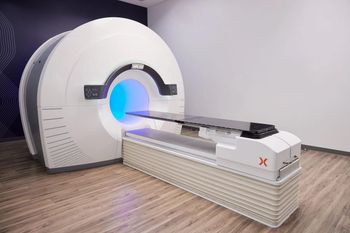
Fusion software offers alternative to expensive PET/CT workstations
Shared PET Imaging is making an offer many in the imaging community are finding hard to refuse.
Shared PET Imaging is making an offer many in the imaging community are finding hard to refuse.
The company, a provider of mobile PET services based in Canton, OH, has developed a low-cost alternative to workstations that fuse PET and anatomically based data sets, including those from CT. The software is currently being validated at a dozen clinical sites, and Shared PET Imaging expects to have the multimodality package installed at more than 100 sites by early June.
ClarityFusion was commercially launched at the 2004 RSNA meeting. It is installed onsite by staff from Shared PET Imaging.
Most of those buying the product will be sites where the mobile provider operates PET imaging. All of the validation sites and about 80% of the installation sites expected by June are already served by Shared PET Imaging.
"A lot of these hospitals had bought a multislice CT, maybe a 16-slice scanner. With this software, they can tie the CT data into a PET scan," said Randy Skiles, CEO of Shared PET Imaging.
But some users may also gain access to ClarityFusion as part of their PACS. Shared PET Imaging is discussing with two PACS vendors the possibility of supplying them with ClarityFusion as part of a licensing agreement.
ClarityFusion registers and reconstructs data obtained at different times on separate scanners, such as a CT at a fixed site and a PET scanner in a mobile trailer. Processing typically requires about half a minute on an off-the-shelf PC.
The FDA-cleared product was developed as part of a cost-saving effort. Workstations for merging the two data sets were too expensive, ranging between $80,000 and $100,000, according to Skiles, who directed his programmers to come up with an alternative. They created ClarityFusion, which sells for about a quarter of the price and runs on PCs with as little computing power as pre-Pentium models running on Intel 386 chips. Processing on such platforms takes longer, however, than on a modern PC.
"Our software runs on pretty much any platform, but, optimally, the more sessions you want to conduct simultaneously, the better the hardware you should have," said Marc Simms, director of IT at Shared PET Imaging.
He recommends a Pentium-based platform operating at 1 GHz with 356 MB of RAM.
ClarityFusion extends the power of the company's ClarityPET software, which produces orthogonal image sets and maximum-intensity projection images, as well as DICOM translation and transfer of PET reconstructions to PACS. ClarityFusion combines ClarityPET with DICOM-compliant multimodality fusion, providing the basis for comparing PET studies with CT, MRI, and other modalities while maintaining a simple user interface.
Newsletter
Stay at the forefront of radiology with the Diagnostic Imaging newsletter, delivering the latest news, clinical insights, and imaging advancements for today’s radiologists.




























